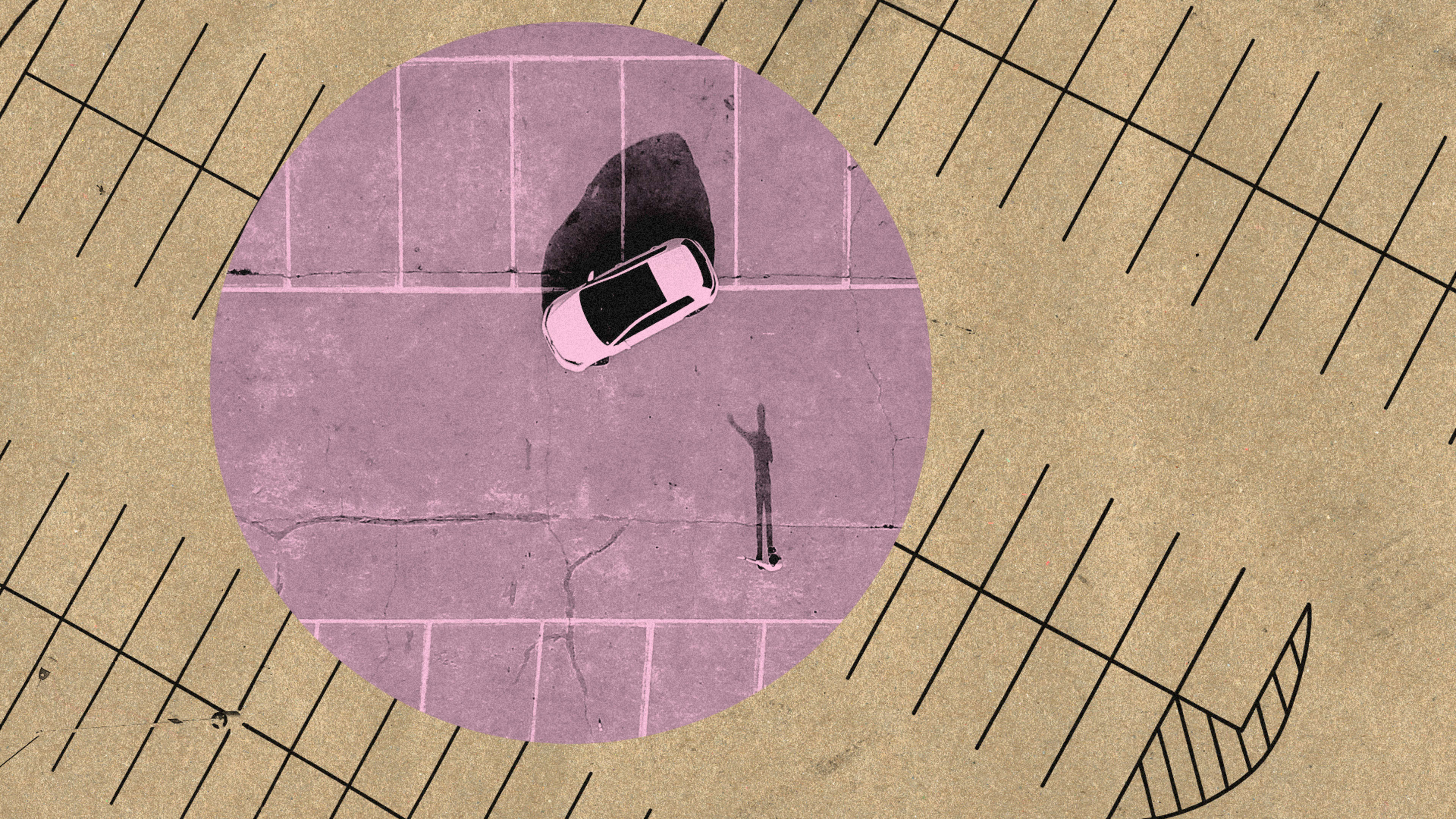Los Angeles has over 100 square miles of surface parking. That’s almost one-quarter of the city’s entire size. For scale, imagine Manhattan multiplied by a little over four, and you have a sense of how much land L.A. reserves for cars to sit.
The problems with America’s love of cars and the space devoted to storing them are well-documented. In the entire country, New York is the only city that has more households than parking spots. Elsewhere, the ratio is skewed. Jackson, Wyoming, for instance, has 27.1 parking spaces per household. Los Angeles, like many other cities, has strict minimum parking requirements attached to buildings: Each residential unit must come with around two off-street parking spots, and for every 100 square feet of commercial space built, a developer also has to provide for one off-street parking space.
What else could be done with all that space?
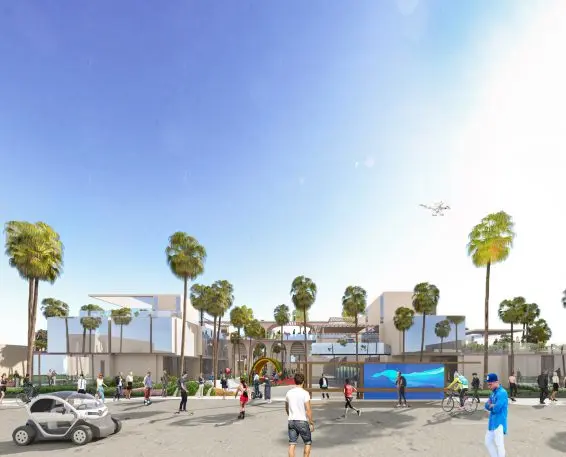
Los Angeles, says Woods Bagot CEO Nik Karalis, “has an important role in urban history as this sort of postwar utopia where you could have the perfect house and a car–but it just kept sprawling and sprawling.” In the middle of the 20th century, car transportation became the norm, and as more and more people fled for the suburbs, leaving cities relatively empty, the amount of space given to vehicles felt like an asset, not an issue. Now, though, more people are moving into cities, and fewer young people are opting to own cars. If they get around by car, they’re choosing to hail a Lyft or Uber, or opting for car-share or a subscription–all models that keep vehicles moving, rather than idling in parking spots. L.A.’s parking-centric design feels impractical and outdated. But now, Karalis says, the city “presents the perfect prototype of how we can reverse that trend, and enable people to enjoy their so-called utopian ideals, but in the context of a more densified city.”
Converting surface parking lots in Los Angeles, the Woods Bagot found, could create space for 750,000 to 1.5 million new inhabitants. This new density help Los Angeles address its homelessness issue, which has grown more extreme in recent years due to lack of housing and high cost of living. And welcoming this many more people could help boost the city’s economy in the form of more filled jobs, and more taxpayers to fund issues like homelessness.
Often, plans to eradicate parking elicit pushback. Business owners sometimes balk, thinking that exchanging parking for more space for pedestrians or cyclists, for instance, will result in a decline of customers. But usually, the reverse effect holds true–more space for people, not cars, is generally beneficial for local economies.
But beyond that, contemplating a shift away from a parking-centric city can be jarring because it’s so different to what people are used to. Recognizing that, Woods Bagot, in its concept study, demonstrated what could happen if L.A.’s vast parking space was converted to the types of buildings that Angelenos are already very familiar with–giving another meaning to the phrase “More LA.” The study looked at three neighborhoods in the city–Inglewood, East Los Angeles, and Downtown–and imagined their dedicated parking zones converted to housing and mixed-use developments that could create more space for people to live and interact, and more opportunities for small businesses to take root.
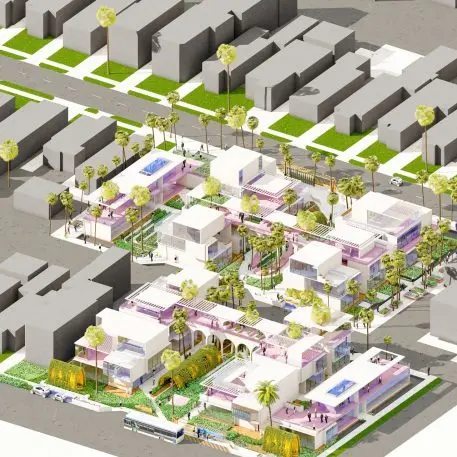
In Inglewood, where residential and commercial blocks are often interrupted by off-street parking lots, Woods Bagot imagines converting those lots into courtyard housing developments–groupings of residential units surrounding a communal green space. The courtyard model is prevalent across L.A., including Inglewood, but has been difficult to build in the past 60 years due to parking requirements. If those requirements were rolled back and more courtyard developments could be built in Inglewood, Woods Bagot found that doing so would increase residential density by 70%, and 23% more green space.
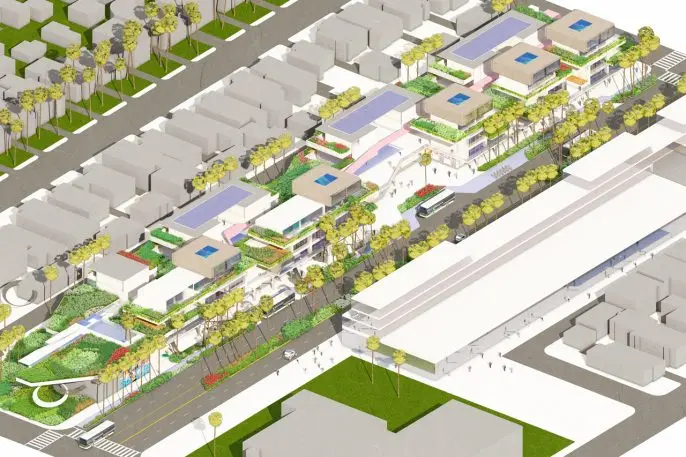
For East Los Angeles, where long stretches of wide boulevards are dedicated to parking, the More LA study imagines those linear lots converted instead into rows of homes, with the possibility for more commercial space underneath them. Under this proposal, density would increase by 100% along with an 11% increase in green space. What’s key about each of these more residential proposals, Karalis says, is that they could double or triple neighborhood density without changing the overall height of buildings in the neighborhoods, which is something that often triggers people’s concerns about the loss of their district’s character. We weren’t looking at this as maximum yield, but rather minimum consistency,” Karalis says. “How much more of existing L.A. could you put on redundant car-parking spaces without offending neighbors?”
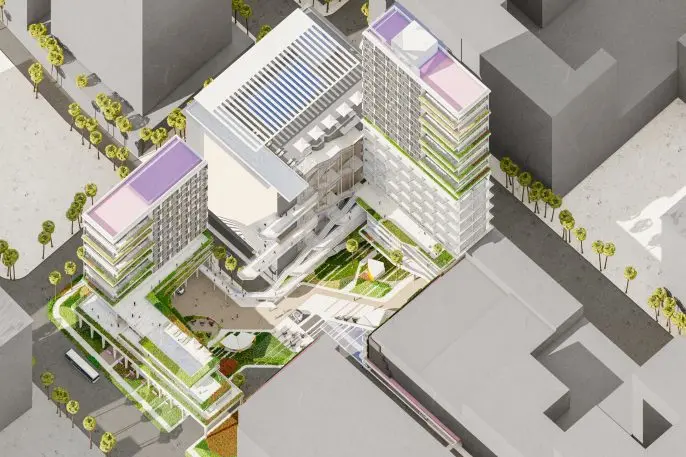
Downtown Los Angeles has already done away with parking minimums, which Woods Bagot says is a sign of progress. The firm’s concept for the neighborhood involves filling in old on-street lots with new developments and parklets, and repurposing old buildings next to those lots that have been left idle. This type of development, Karalis says, would help encourage people away from their cars, and toward more sustainable options like bikes, scooters, and mass transit–which additional revenue from the tax on new developments could help fund.
The changes that Woods Bagot is proposing to the Los Angeles landscape are subtle in nature, but could still yield significant changes to the city’s density, and lead to a city much less dependent on cars than it currently is–and serve as a model for other parking-heavy cities. “We could bring as many as 3 million new residents to the city without anyone really noticing a difference, except there’s less redundant spaces for cars to sit all day,” Karalis says.
Recognize your brand’s excellence by applying to this year’s Brands That Matter Awards before the early-rate deadline, May 3.
